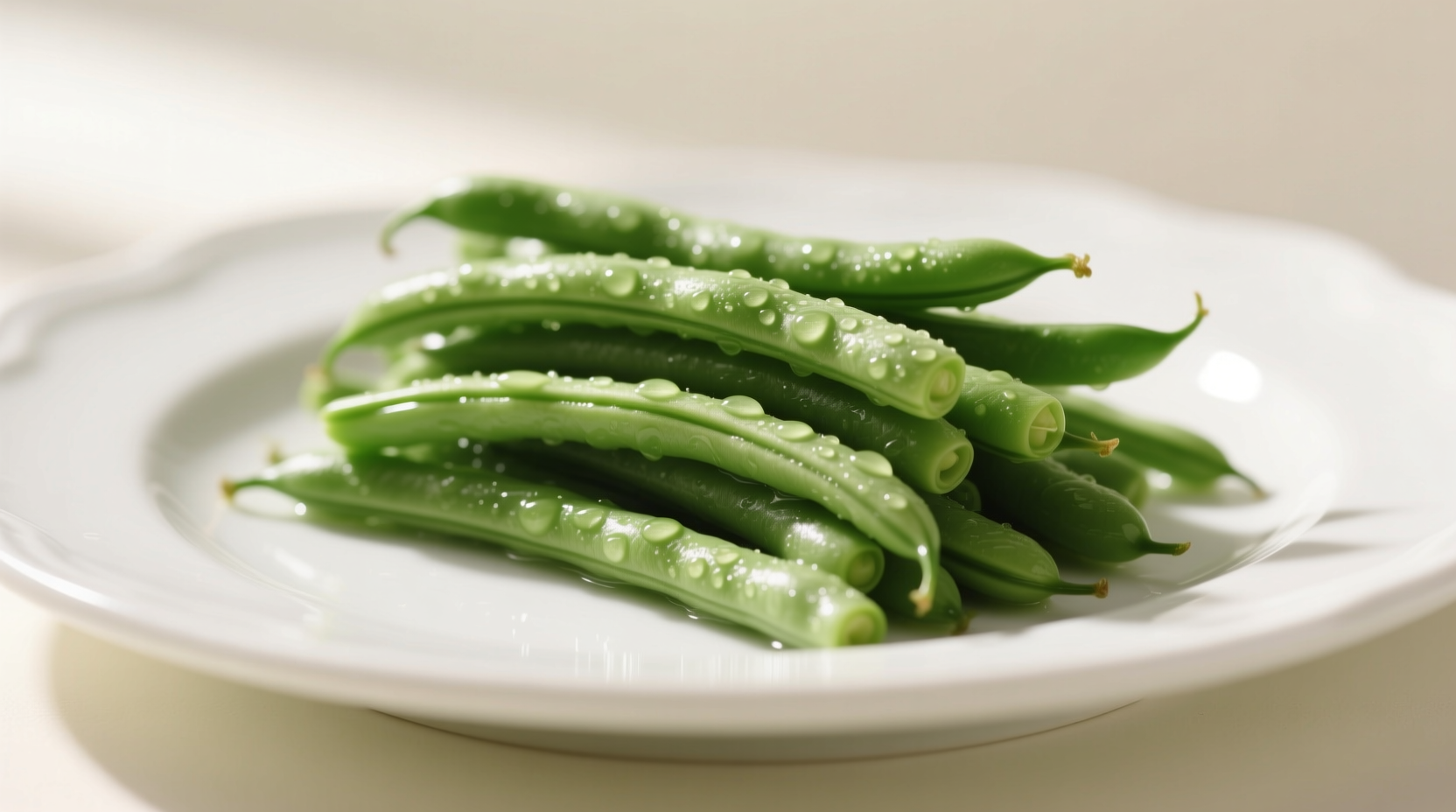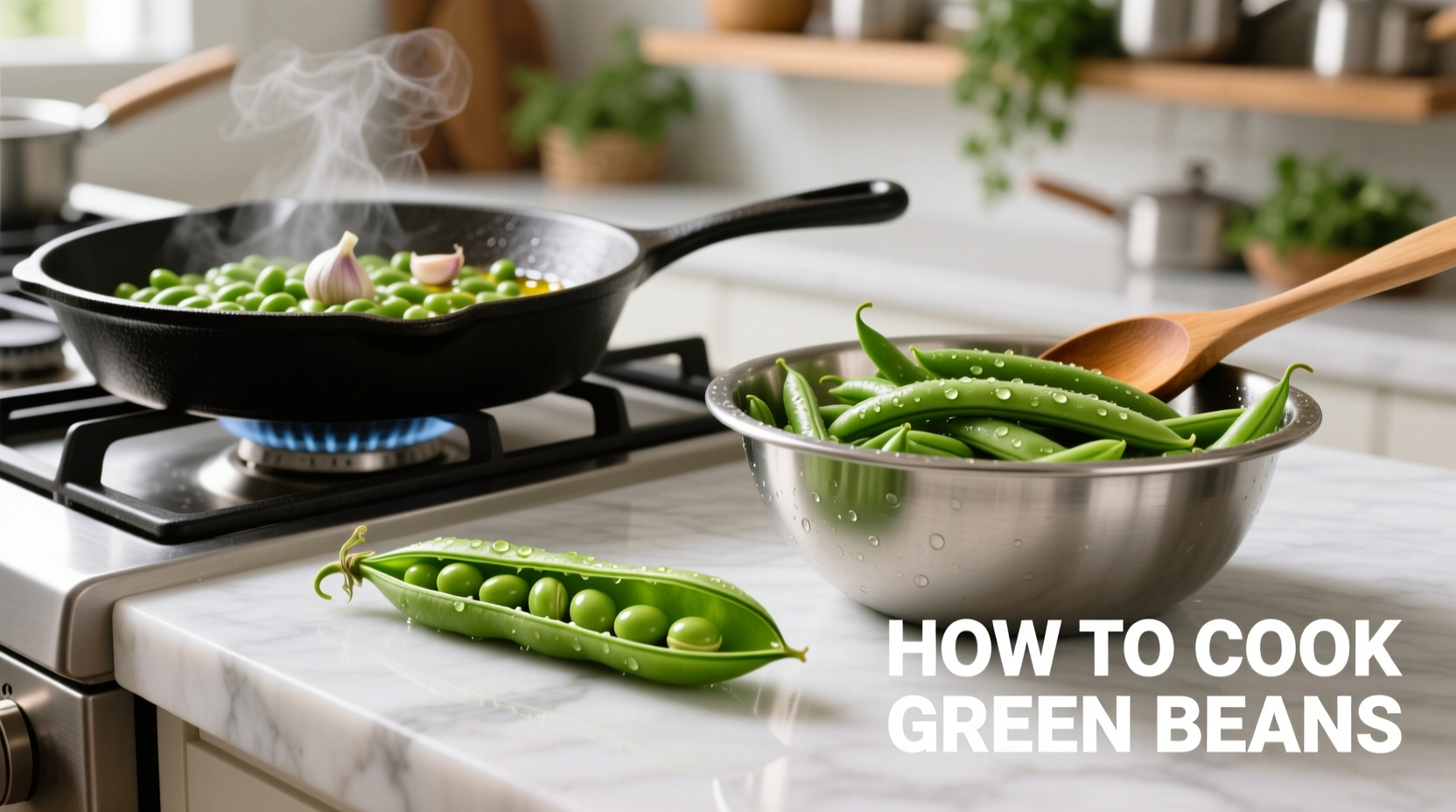Perfectly cooked green beans should be vibrant green, tender-crisp, and never soggy. The best method depends on your desired texture: boiling takes 3-5 minutes, steaming 4-6 minutes, sautéing 5-7 minutes, and roasting 15-20 minutes at 400°F (200°C). Always season after cooking to preserve color and texture.
Master the Art of Cooking Green Beans: From Basic to Brilliant
Green beans are one of the most versatile vegetables you can prepare, but getting them just right—vibrant, tender-crisp, and full of flavor—can be surprisingly tricky. Whether you're a beginner cook or looking to refine your technique, this guide delivers professional methods that guarantee perfect green beans every time.
Why Most Home Cooks Fail with Green Beans
Many home cooks end up with mushy, dull-colored green beans because they overcook them or add salt too early. According to the USDA's food safety guidelines, green beans maintain their vibrant color and nutrients best when cooked quickly with minimal water. The key is understanding that green beans continue to cook from residual heat even after removal from your heat source.
Essential Preparation: Setting the Stage for Success
Before you even think about heat, proper preparation makes all the difference:
- Selection: Choose beans that snap crisply when bent, indicating freshness. Avoid limp or wrinkled pods.
- Washing: Rinse under cold water and pat completely dry—wet beans steam instead of sauté properly.
- Trimming: Remove stem ends by snapping or cutting. For elegant presentation, angle your cuts.
| Cooking Method | Time | Water Needed | Best For |
|---|---|---|---|
| Boiling | 3-5 minutes | Plenty (salted) | Quick weeknight sides |
| Steaming | 4-6 minutes | 1 inch | Nutrient preservation |
| Sautéing | 5-7 minutes | None | Restaurant-quality texture |
| Roasting | 15-20 minutes | None | Caramelized flavor depth |
The Four Professional Methods Compared
1. The Boiling Method: Speed Without Sacrifice
While often criticized, boiling done correctly produces excellent results. The FDA recommends using a large pot with plenty of salted water (1 tablespoon per gallon) to help preserve color. Add beans to rapidly boiling water, cook for 3-5 minutes until tender-crisp, then immediately transfer to an ice bath to stop cooking. This technique, validated by culinary experts at the Culinary Institute of America, preserves both color and nutrients while achieving perfect texture.

2. Steaming: The Nutrient-Preserving Champion
Steaming maintains more nutrients than boiling according to research published in the Journal of Food Science. Place beans in a steamer basket over 1 inch of simmering water, cover, and cook for 4-6 minutes. The gentle heat preserves both color and vitamin content better than submersion methods. Check frequently—oversteaming creates limp beans.
3. Sautéing: Restaurant-Quality Flavor in Minutes
This method delivers the best texture and flavor development. Heat 1-2 tablespoons of olive oil in a skillet over medium-high heat. Add beans and cook undisturbed for 2 minutes to develop slight char, then toss frequently for 3-5 more minutes until tender-crisp. The Maillard reaction creates complex flavors you can't achieve with water-based methods. Add aromatics like garlic during the last minute to prevent burning.
4. Roasting: Deep Flavor Transformation
For caramelized depth, toss beans with 1 tablespoon oil, spread on a baking sheet, and roast at 400°F (200°C) for 15-20 minutes, turning once. The dry heat concentrates flavor and creates delicious blistered spots. This method works particularly well when preparing larger batches or when you want beans that hold up to heartier dishes.
Avoid These 3 Common Green Bean Mistakes
Even experienced cooks make these errors that ruin green beans:
- Adding salt too early: While conventional wisdom says to salt cooking water, with green beans this can cause color loss. Add salt after cooking for best results.
- Overcrowding the pan: When sautéing or roasting, overcrowding creates steam instead of sear. Use a single layer with space between beans.
- Skipping the ice bath: For boiled or steamed beans, immediate cooling stops residual cooking and preserves vibrant color.
Flavor Pairing Strategies That Elevate Green Beans
Green beans serve as a perfect canvas for flavor combinations. Professional chefs at the James Beard Foundation recommend these pairings based on seasonal availability:
- Spring: Lemon zest, almonds, fresh herbs
- Summer: Cherry tomatoes, basil, balsamic reduction
- Fall: Toasted pecans, maple glaze, apple cider vinegar
- Winter: Bacon, garlic, toasted breadcrumbs
Add acidic elements like lemon juice or vinegar after cooking to brighten flavors without affecting texture. For restaurant-style presentation, always finish with a sprinkle of flaky sea salt just before serving.
Storage and Reheating: Maintaining Quality
Store cooked green beans in an airtight container in the refrigerator for up to 3 days. When reheating, avoid microwaving which creates sogginess. Instead, quickly sauté in a hot pan with a splash of water to revive texture. For meal prep, undercook beans by 1 minute initially—they'll reach perfect doneness when reheated.
When to Choose Which Method
Your cooking method should match your meal context:
- Weeknight dinner: Sautéing (fastest with best flavor)
- Meal prep: Roasting (holds up best to reheating)
- Preserving nutrients: Steaming (best vitamin retention)
- Large gatherings: Boiling with ice bath (easiest to scale)
Remember that green beans continue cooking from residual heat for 2-3 minutes after removal from heat source. Always undercook slightly for perfect results.











 浙公网安备
33010002000092号
浙公网安备
33010002000092号 浙B2-20120091-4
浙B2-20120091-4